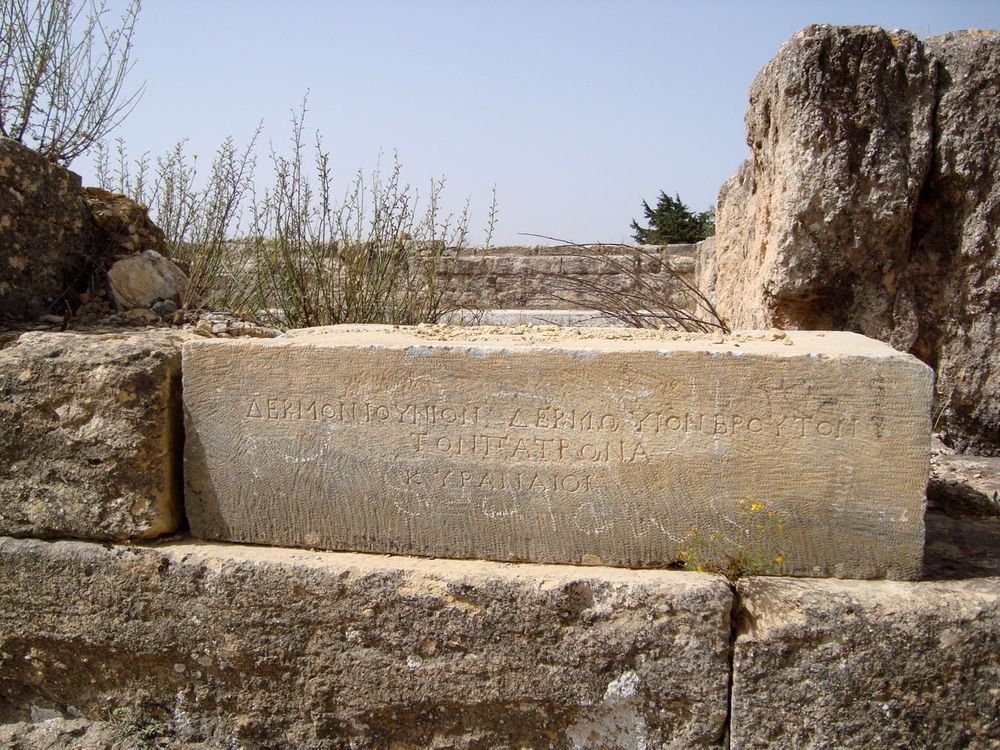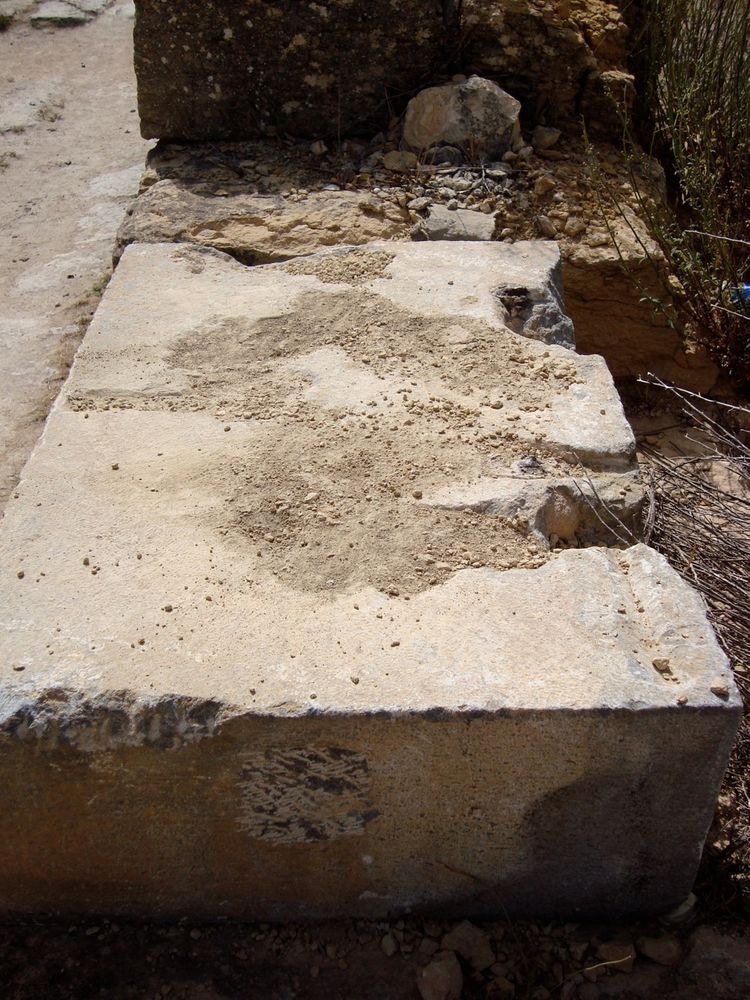EpiDoc XML:
IGCyr0918002
Trismegistos ID:
738443
Source description
Support: Rectangular block of gray-blue marble bearing on the rear of upper side two half feet-shaped cavities and a canal for pouring melted metal; this block was thus part of an originally deeper block or monument, at least in its later use (w: 1.02 × h: 0.29 × d: 0.67).
Layout: Inscribed on face, probably in three lines, out of which lines 1 and 2 were re-cut as IRCyr2020 C.62 in a shallow rasura. The former lines 1 and 2 seem to have been about as long as the new ones, the whole being centered along vertical axis.
Letters: 0.025, with slight apices; small differences with the later script: alpha with lower bar, kappa with larger oblique bars, broader nu, omicron as large as the other letters.
Date: Probably end of second century or beginning of first BC
Findspot: First seen by N. Adams in 2003 at Cyrene ➚: re-used in a wall closing to the North the so-called Hall of the Orthostats, when its former facade was incorporated into the IVth century AD tower that blocked the Street of Battos.
Last recorded location: Seen by C. Dobias-Lalou in 2010 at findspot, along the Street of Battos.
Text constituted from: Transcription from stone (CDL).
Bibliography
Adams 2003, pp. 56-57, n. 6 (cf. Dobias-Lalou, BE, 2005.623), whence SEG, 53.2044; IGCyr 091800 ➚.
Text
Apparatus
1-2: Adams did not see that ll. 1-2 were erased and overstruck for IRCyr2020 C.62
French translation
⟦[Un tel, fils d'un tel a été honoré]⟧, par les Cyrénéens.
English translation
⟦[So-and-so son of So-and-so was honored]⟧ by the Cyrenaeans.
Italian translation
⟦[Il tale, figlio del tale è stato onorato]⟧ dai Cirenei.
Arabic translation
من قبل الكيرينيين [[تم تكريمهم فلان وفلان ]〛
Commentary
The formula ending with Κυραναῖοι is that of a honorific inscription and the style of the monument, presumably a very large base with a statue, lets us suppose that the honorandus was either a Ptolemy or a member of the Ptolemaic court. The stone was erased and re-cut, probably some decades later, at the very beginning of the Roman domination over Cyrenaica. The style of the lettering is quite similar to the stele for Aiglanor (IGCyr0650002).
CC BY-NC-SA 4.0 Deed Attribution-NonCommercial-ShareAlike 4.0 International License.
All citation, reuse or distribution of this work must contain a link back to DOI: https://doi.org/10.60760/unibo/igcyrgvcyr2 and the filename (IGCyr000000 or GVCyr000), as well as the year of consultation.


